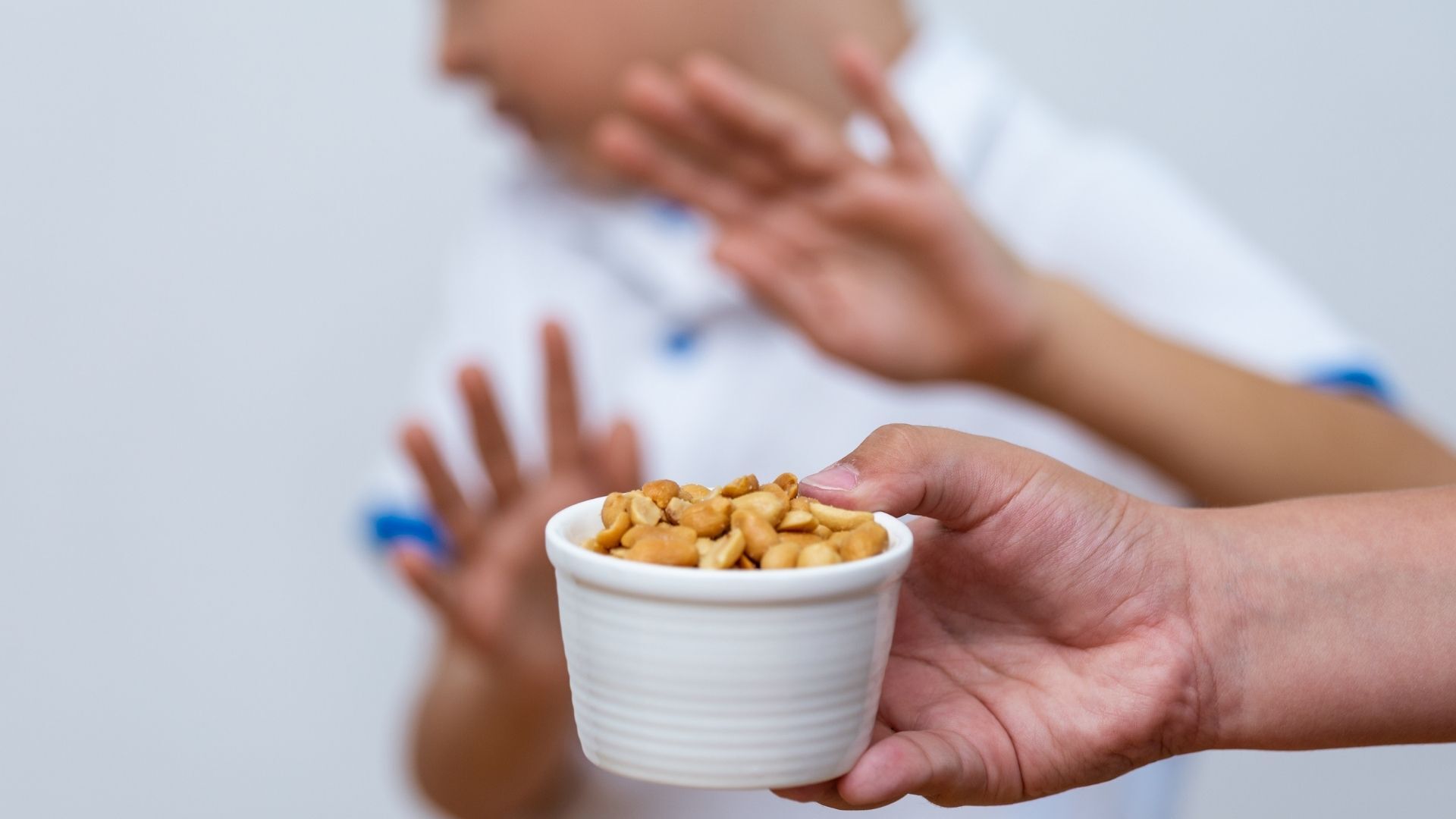Food Allergies in Babies: A Guide to Introducing Allergenic Foods with Confidence
Allergies might be a scary subject for new parents. We want to give you the confidence to introduce allergenic foods by informing you on what to look out for, when to introduce them and what to do if you notice an allergic reaction.

What is a food allergy?
When your baby is allergic to a certain food, their bodies will respond by releasing histamines. These histamines can cause inflammation and other allergic symptoms we will discuss below. A food allergy is not the same as a food intolerance. More about this difference at the end of this article.
What are the most common allergenic foods?
There are 9 ingredients that make up the most common allergens. This means that these 9 foods are responsible for 90% of food allergies. This means the other 10% is made up of other foods, that are not commonly the cause of allergic reactions. In theory, a person can be allergic to any food.
Of course, this means every dish or product that is made with one of these ingredients can cause an allergic reaction. A child allergic to cow's milk will also be allergic to yoghurt & cheese or any other product made with cow's milk.
The good news is that allergies to milk, egg, wheat & soy tend to resolve with age. By the time children start going to school, many of these allergies disappear. Allergies to the other foods are more likely to be lifelong. This doesn't mean you can't also develop food allergies as an adult. You can, at any point in your life develop food allergies.
When to introduce allergenic foods.
Studies show that postponing the introduction of allergens does not help is avoiding allergies, on the contrary. Delaying the introduction can actually increase a child's risk to developing an allergy. Early introduction creates a tolerance to the food and protects the child from severe reactions.
Some children are more at risk than other to develop food allergies. Children that are allergic to one of the 9 foods, are more likely to be allergic to another food in this group. Children that have a close family member (a sibling or parent) with a clinically diagnosed allergy are also more likely to develop an allergy themselves. However, also in these higher risk cases, delaying the introduction of common allergenic foods is generally not advised. If your baby is part of this risk group, talk to your pediatrician about the introduction of allergenic foods and possibly getting an allergy testing beforehand. Children with eczema are also more likely to have food allergies.
How do you recognise an allergic reaction?
An allergic reaction can range from mild to moderate or severe. Good news: reactions in babies are generally much milder than for older children. Another reason to not miss your early introduction window.
You can start seeing symptoms seconds to minutes after eating the food. In some cases the symptoms can start after a couple of hours. Important to know is that your baby can be completely symptomless after the first time of eating an allergen and only show symptoms the second time
The most common symptom is a localised skin rash. Other symptoms are swelling of the face, mouth and tongue, swollen and watery eyes, frequent sneezing or nasal congestion. A child might also vomit or have diarrhoea. In the most severe cases, a child can develop an anaphylactic reaction, where they might have difficulty breathing, have a full body rash and swollen eyes, start vomiting and sometimes even lose consciousness. Fortunately this happens very rarely. In most cases of food allergy, the symptoms are much milder and will disappear on their own.
What to do when you notice symptoms of an allergic reaction.
When you start seeing symptoms of an allergic reaction, keep a close eye on your child. there's no need to panic. A localised rash will often disappear after a while but check if your child is not developing any other symptoms. If you feel like the reaction is getting worse or your child is uncomfortable, get a doctor on the phone and ask for advice. Take pictures of your baby's rash or any swelling so you can show it to the pediatrician. They can determine whether to wait it out, or advise you to come in and possibly prescribe medication. If your baby develops a severe allergic reaction, call an ambulance and try to comfort your child while waiting.
If you notice recurring symptoms after mealtimes but you're unsure whether it's an allergy or you're unsure to which food your baby might be allergic, it can be very helpful to keep a log. Write down which meal your baby ate, the symptoms and add a picture. Your paediatrician can then further evaluate whether your child is allergic and to what food.
What's the difference between a food intolerance and a food allergy?
It's important to know the difference between food intolerance and food allergy. The two are caused by different biological processes. Testing and treatment of food intolerance are also different from those of food allergy. If your baby has a food intolerance, this means their body has difficulty digesting this food or the food is irritating to the digestive system. This means the symptoms will be different as well. If your baby has a food intolerance they might get bloated, gassy, have stomach cramps and/or diarrhoea. In some cases, babies can also develop a rash in the face and/or neck. This makes it hard to distinguish a intolerance from an allergy. Ask your paediatrician for advice to determine whether your child is allergic or has a food intolerance.
We hope this information gives you more clarity and confidence about introduction of allergens. In our weekly recipes, tips and challenges we will make sure you keep track of this without having to think of it.
